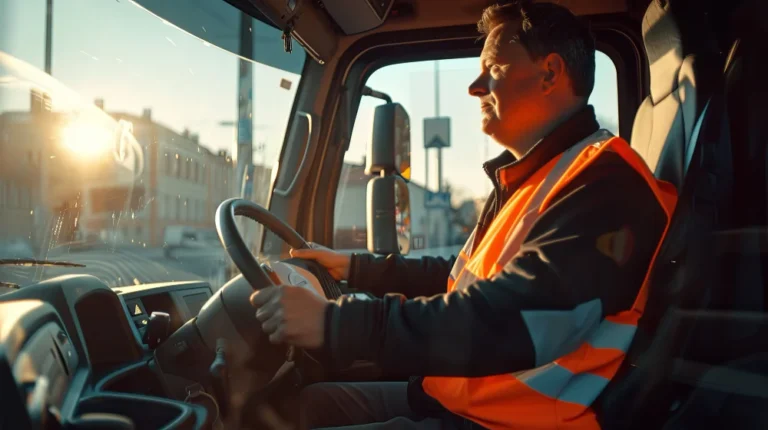Beyond the Breaking Headlines: Examining the Evolution of News Delivery
The world of news delivery is a whirlwind of constant change. From the days of town criers and painstakingly printed broadsheets to the age of instant notifications and personalized social media feeds, the way we consume information has transformed dramatically. This article delves into this fascinating journey, exploring the key milestones that have shaped modern news delivery and what lies ahead on the ever-evolving horizon.
From Town Criers to the Printing Press: The Birth of Mass Communication
In the pre-modern era, news traveled slowly, often by word of mouth. Town criers, adorned in colorful garments, would announce important events in public spaces, their booming voices echoing through bustling marketplaces. Handwritten newsletters circulated amongst the elite, served as a more exclusive means of information dissemination. However, these methods were limited in reach and hindered by the slow pace of communication.
The advent of the printing press during the 15th century signaled a groundbreaking shift. Newspapers, with their mass production capabilities, emerged as a powerful tool for disseminating news to a wider audience. This era saw the rise of influential publications like the London Gazette and the Boston News-Letter, shaping public discourse and opinion. While these early newspapers were primarily text-based, they laid the foundation for the information age to come.
The Golden Age of Broadcasting: Radio and Television Take the Stage
The 20th century ushered in a new era of news delivery with the invention of radio and television. Radio, with its immediacy and accessibility, brought news directly into people’s homes. Live broadcasts of major events fostered a sense of community during times of crisis, allowing people to share the experience of history unfolding in real-time. Whether it was the announcement of World War II or the moon landing, radio provided a powerful platform for disseminating information and fostering a sense of shared experience.
Television, with its visual storytelling capabilities, revolutionized how we experienced the news. News broadcasts became a fixture in daily life, offering a more immersive and emotional connection to current events. Anchors like Walter Cronkite and David Brinkley became trusted figures, delivering the news with a sense of authority and gravitas. Television news also brought a new dimension to storytelling, allowing viewers to witness events as they unfolded through captivating visuals and on-location reporting.
The Digital Revolution: A Double-Edged Sword of Information
The rise of the internet in the late 20th century sent shockwaves through the news industry. News websites emerged, offering continuous updates, breaking news alerts, and multimedia content. For the first time, news became truly global and accessible 24/7. However, this era also ushered in a period of fragmentation and complexity.
The Power and Peril of the Internet: Democratization of Information and the Rise of Fake News
The internet democratized information access, allowing anyone to become a publisher. Social media platforms like Facebook and Twitter became breeding grounds for information, both credible and misleading. The ease of sharing content, coupled with the lack of traditional gatekeepers, fueled the spread of misinformation and “fake news.” This phenomenon has posed a significant challenge in the digital age, eroding public trust in media and making it difficult to distinguish fact from fiction.
Filter Bubbles and the Erosion of Trust: Algorithms and the Personalized Echo Chamber
Social media algorithms, designed to keep users engaged, have further complicated matters. These algorithms create “filter bubbles,” where users are exposed primarily to information that confirms their existing beliefs. This can lead to a lack of critical thinking and a polarized public discourse, where individuals are increasingly isolated from opposing viewpoints. The erosion of trust in traditional news outlets has further exacerbated this phenomenon, making it more difficult for people to find reliable sources of information.
Navigating the Digital Age: Fact-Checking, Media Literacy, and the Importance of Reliable Sources
In this complex digital landscape, critical thinking and a discerning approach are essential. Fact-checking organizations like PolitiFact play a vital role in verifying information and debunking myths. Media literacy education empowers individuals to evaluate the credibility of sources, identify bias, and distinguish between news and opinion.
Here are some key strategies for navigating the digital news landscape:
- Be critical: Don’t accept information at face value. Question the source, check for corroboration from other reliable sources, and be aware of potential bias.
- Fact-check: Utilize fact-checking websites and tools to verify information and identify misinformation.
- Seek diversity: Don’t limit yourself to one news source. Explore outlets with varying perspectives to gain a well-rounded understanding of current events.
- Support credible journalism: Subscribe to reputable news organizations that uphold journalistic ethics and fact-checking practices.
A Case Study: newztalkies.com – A Platform for Diverse and Reliable Content
In this context, platforms like newztalkies.com offer a valuable resource for news consumers seeking reliable information on a variety of topics.
Here’s why newztalkies.com stands out in the ever-evolving news landscape:
- Content Diversity: From health and education to digital marketing and online business techniques, newztalkies.com offers a one-stop platform for exploring various content areas. This allows users to stay informed on a wide range of topics without having to navigate multiple websites.
- Focus on Credibility: The platform prioritizes accurate and well-researched information, ensuring users have access to reliable sources. Editorial processes and fact-checking practices help to ensure the quality and trustworthiness of the content.
- Accessibility for All: The user-friendly interface makes it easy for everyone to find the information they need, regardless of their technical background. Clear navigation, well-organized categories, and a search function ensure a smooth user experience.
Additionally, newztalkies.com offers several features that enhance the user experience:
- Engaging Content Formats: The platform utilizes a variety of content formats, including articles, infographics, and videos, to cater to different learning styles and preferences. This keeps the information engaging and accessible to a wider audience.
- Regular Updates: Newztalkies.com keeps its content fresh with regular updates on current events and trending topics. This ensures users have access to the latest information.
- Community Building: The platform may offer comment sections or discussion forums, allowing users to interact with each other and share different perspectives on news and information.
In a world saturated with information, newztalkies.com provides a valuable resource for those seeking reliable and accessible content across a diverse range of topics.
The Future of News: Personalization, Engagement, and the Fight for Trust
Looking ahead, the future of news delivery is likely to be characterized by increased personalization and engagement. Users will expect news feeds tailored to their interests and preferences, delivered through innovative formats like interactive infographics, virtual reality experiences, and personalized news aggregators.
However, the fight for trust will remain paramount. News organizations will need to continue to demonstrate journalistic integrity and find ways to cut through the noise of misinformation. This may involve:
- Transparency: Providing clear information about editorial processes, ownership structures, and funding sources can help to build trust with audiences.
- Innovation: Utilizing new storytelling formats and engaging with audiences on different platforms can help to keep news relevant and capture attention.
- Community Engagement: News organizations can foster a sense of community by offering opportunities for interaction and feedback from their audience.
The future belongs to those who can not only deliver the news effectively but also foster a sense of trust and connection with their audience. By understanding the evolution of news delivery and the challenges of the digital landscape, we can become more informed consumers, actively seeking out reliable sources and approaching information with a critical eye. After all, in today’s world, a well-informed citizenry is essential for a healthy democracy and a prosperous society.






